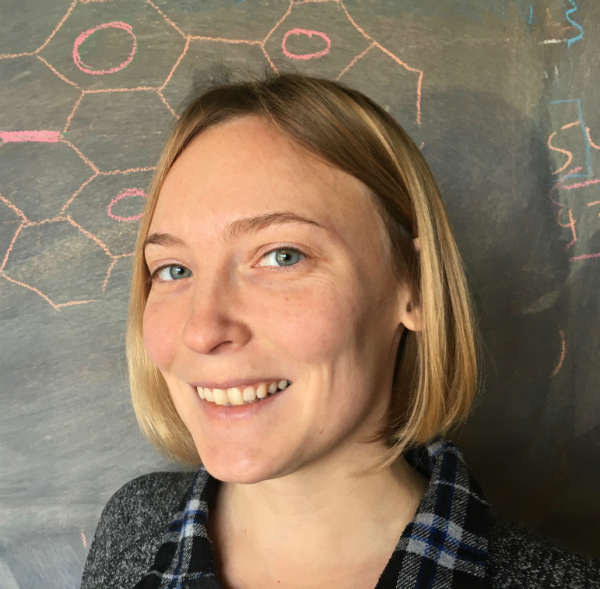January 22, 2020

MCLA Professor Elizabeth Hartung and Dr. Nino Bašić, an assistant professor of computer science at the University of Primorska in Slovenia, were recently awarded a bilateral research grant for work in chemical graph theory.
MCLA Associate Professor of Mathematics Dr. Elizabeth Hartung’s main area of research is graph theory—chemical graph theory in particular. To narrow that down even more, Hartung focuses primarily on fullerenes and benzenoids. But what are those, exactly?
They’re graphical representations of carbon molecules, including buckyballs, nanotubes, and graphene. In particular, she looks at the double bond structures of these molecules, which are related to their stability and electrical conductivity. Her work on the subject has been published widely and she travels often to conferences in places as far-flung as Slovenia, Germany, China, and Hawaii to give talks on her research.
At one such conference, in 2015, Hartung met Dr. Nino Bašić, an assistant professor of computer science at the University of Primorska in Slovenia. Recently, Hartung and Basic were awarded a bilateral research grant for work in chemical graph theory. The grant, awarded by the Agency of Research of the Republic of Slovenia in October 2019, will allow the two professors to coordinate on work with fullerenes and benzenoids.
“He’s mostly working on this as a computer scientist, generating data and looking for patterns in this data,” said Hartung about their research. “I look at the mathematical structure underlying these molecules, and we’ll be coming together to work on this.” The two-year grant will allow Bašić to travel to the U.S. and Hartung to visit Slovenia. “This is a piece of my ongoing research and related to what I worked on for my Ph.D.,” Hartung said. “I’ve published papers in this area but there’s still more to do.”
One of the things the pair will be looking at is the clustering of pentagons on the surface of fullerenes. “I’ve looked at the Clar number [the maximum number of independent resonant hexagons in a fullerene] and he’s been looking at clusters of pentagons,” said Hartung. “We’re joining forces to see how they relate to each other.” Both Hartung and Bašić have worked with some of the same chemists and physicists, as this research community is very interconnected, said Hartung.
She said this collaborative work on fullerenes will be presented at conferences, as well as published, in the future.
Closer to home, Hartung and six MCLA undergrads have also collaborated on work related to her ongoing fullerene project. They focused on studying parameters of fullerenes related to their stability and conductivity, with the goal of publishing an index of these values for highly symmetric fullerenes. Two of the students presented this work at the Undergraduate Research Conference in April 2019.
This spring, Hartung is teaching Proof I, targeted for math majors and minors, and a Discrete Math class, which she said is of particular interest to computer scientists; the class is designed with them in mind. In the fall of 2020, she’ll again be teaching a class on graph theory, a specialty she continues to be excited to share with others.
***
Are you an MCLA student, alum, or faculty member? Do you want MCLA to share your story? Please email Creative and Brand Strategy Manager Francesca Olsen at Francesca.Olsen@mcla.edu.